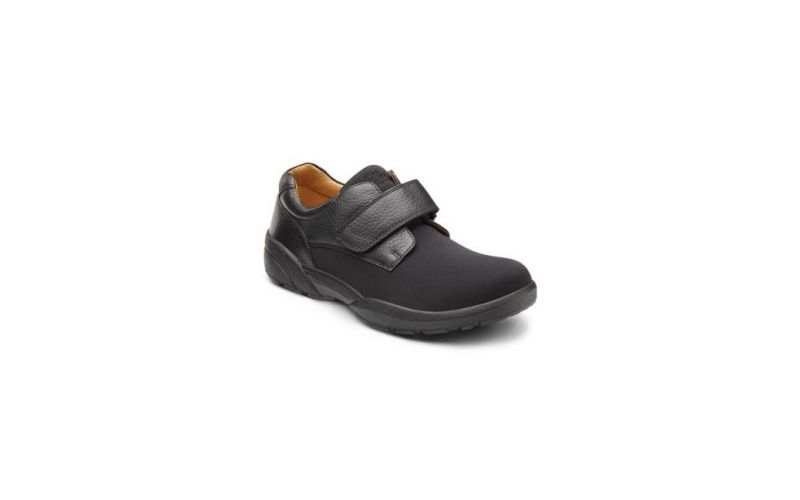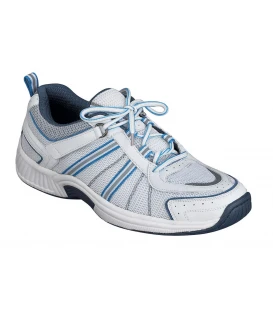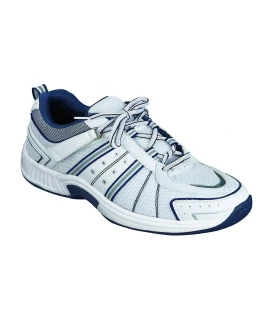Picking the Right Diabetic Shoes: Promoting Foot Health and Comfort

For individuals living with diabetes, foot care plays a crucial role in maintaining overall health and well-being. Diabetes can lead to various complications, including peripheral neuropathy and poor circulation, which increase the risk of foot injuries and infections. Wearing the right footwear, such as diabetic shoes, can significantly reduce these risks and promote foot health. In this article, we will explore the importance of picking the right diabetic shoes and provide guidelines to help you make an informed decision.
Understanding Diabetes-Related Foot Issues:
Diabetes can have a significant impact on the feet due to its effects on the nervous and circulatory systems. Peripheral neuropathy, a common complication of diabetes, causes nerve damage and can lead to loss of sensation in the feet. Reduced blood flow and poor circulation can result in slower wound healing and an increased risk of infections. Moreover, deformities like bunions and hammertoes can develop, making it difficult to find appropriate footwear.
The Role of Diabetic Shoes:
Diabetic shoes are specifically designed to address the unique foot care needs of individuals with diabetes. These shoes provide features that minimize the risk of foot injuries, ulcers, and other complications. They offer superior support, cushioning, and protection, which are essential for diabetic foot care. Let's delve into the key factors to consider when selecting the right diabetic shoes:
1. Extra Depth and Width:
Diabetic shoes typically feature extra depth to accommodate custom orthotics, cushioning, and swelling that may occur in the feet. This additional space helps prevent pressure points and reduces the risk of developing foot ulcers. Wide toe boxes also allow the toes to move freely and prevent friction and rubbing, which can lead to blisters and calluses.
2. Seamless Interior:
Seams and rough areas inside shoes can cause irritation and increase the risk of skin breakdown. Look for diabetic shoes with a seamless interior to minimize the chances of friction and pressure-related injuries.
3. Soft, Non-Irritating Materials:
Choose shoes made from soft, breathable materials such as leather or mesh. These materials allow for better air circulation and reduce the likelihood of excessive sweating and fungal infections. Avoid shoes with rigid or rough materials that can cause irritation and discomfort.
4. Protective Features:
Diabetic shoes often incorporate protective features to guard against injury and infection. Look for shoes with reinforced toe caps, which provide added protection against accidental impacts. A rocker sole or cushioned midsole can help redistribute pressure, reducing the strain on vulnerable areas.
5. Adjustable Closures:
Diabetic shoes should have adjustable closures, such as Velcro straps or laces, to ensure a secure and customizable fit. Adjustable closures allow for changes in foot swelling throughout the day, providing comfort and preventing pressure points.
6. Proper Arch Support:
Diabetic shoes should provide adequate arch support to promote proper alignment and reduce stress on the feet. A well-supported arch helps distribute weight evenly and prevents the development of foot conditions such as plantar fasciitis.
7. Breathability:
Proper ventilation is essential to maintain dryness and prevent bacterial and fungal growth. Look for shoes with breathable materials and moisture-wicking properties to keep your feet comfortable and free from infections.
8. Professional Fitting:
While general guidelines can help you make an informed decision, it is highly recommended to visit a professional shoe fitter or a podiatrist specializing in diabetic foot care. They can assess your feet, measure for the right size, and offer specific recommendations based on your unique foot characteristics.
Conclusion:
When it comes to managing diabetes, paying attention to foot health is crucial. Selecting the right diabetic shoes can significantly reduce the risk of foot complications, ulcers, and infections. Remember to look for shoes with extra depth and width, a seamless interior, soft and non-irritating materials, protective features, adjustable closures, proper arch support, breathability, and seek professional fitting when possible. By investing in proper footwear and taking care of your feet, you can promote foot health, reduce the risk of complications, and enhance your overall quality of life.












